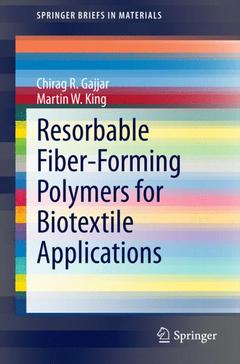Description
Resorbable Fiber-Forming Polymers for Biotextile Applications, 2014
SpringerBriefs in Materials Series
Authors: Gajjar Chirag R., King Martin W.
Language: English
Subjects for Resorbable Fiber-Forming Polymers for Biotextile...:
Keywords
Bioabsorbable; Biodegradable; Biomaterials; Biopolymers; Bioresorbable; Bioresorbable Polymers; Bioresorbable Polymers; Degradation Mechanism; Biotextile Devices; Biotextiles; Engineering Scaffolds; Enzymatic Degradation; Enzymatic Resorption; Enzymatically Resorbable Polymers; Enzymes Synthetic Biopolymers; Fiber-forming Resorbable Polymers Applications; Fiber-forming Resorbable Polymers Biotextile Devices; Fiber-forming Resorbable Polymers Materials; Fiber-forming Resorbable Polymers Processing; Fiber-forming R
Approximative price 52.74 €
In Print (Delivery period: 15 days).
Add to cart78 p. · 15.5x23.5 cm · Paperback
Description
/li>Contents
/li>Comment
/li>
Preface.- Chapter 1: Overview of Resorbable Biomaterials.- Chapter 2: Degradation Process.- Chapter 3: Biotextiles—Fiber to Fabric for Medical Applications.- Chapter 4: Hydrolytically Sensitive Fiber-Forming Bioresorbable Polymers.- Chapter 5: Processing Parameters and the Rate of Resorption.- Chapter 6: Enzymatically Sensitive Fiber-Forming Bioresorbable Polymers.- Chapter 7: Current Applications of Biotextiles and Future Trends.- References.- Index.
Includes supplementary material: sn.pub/extras
These books may interest you

Biotextiles as Medical Implants 274.96 €



